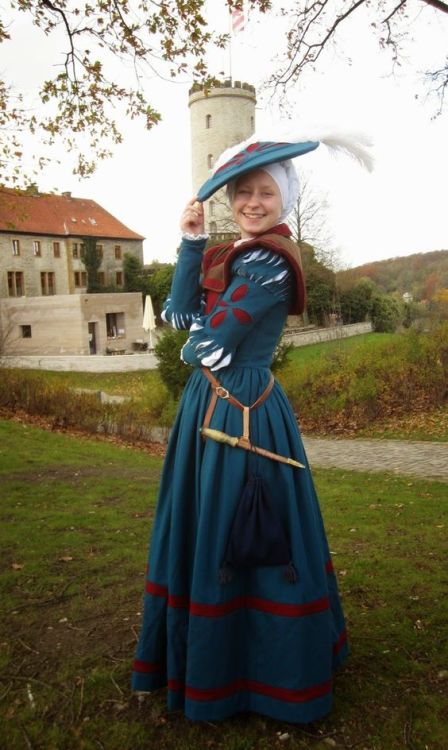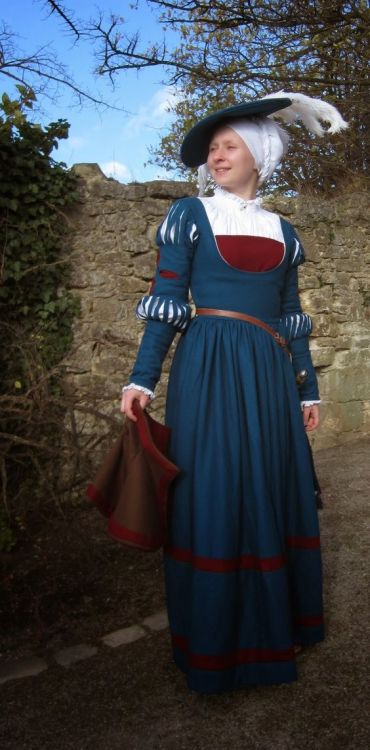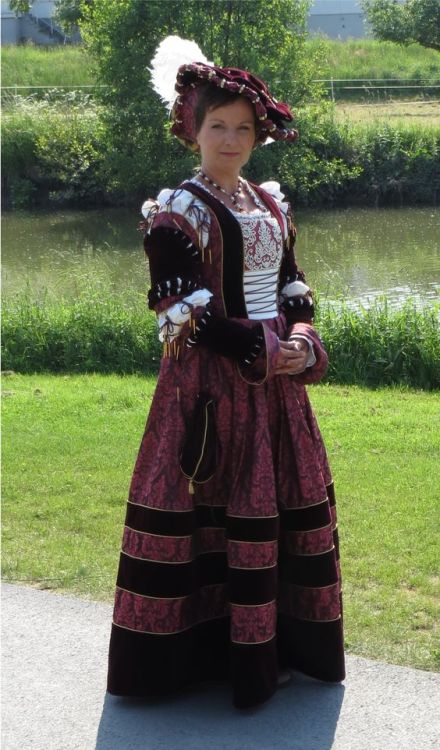German Renaissance fashion (click to enlarge)1. 16th century German dress based on the art of Lucas
German Renaissance fashion (click to enlarge)1. 16th century German dress based on the art of Lucas Cranach2. 16th century German Renaissance gown by Evergreen Artes4-6. 16th century7-8. 16th century kampfrau by Zeitenmode9. 16th century Saxon court gown10. 16th century kampfrauLandsknechte (German plural, singular Landsknecht) were mercenaries from the late 15th to the late 16th century. Knecht, meaning servant, helper, or stooge, was also used for the paid foot soldiers that were to be known as the Landsknecht. The format of the German mercenaries was inspired from the Swiss army, as was the dress fashion.The tross were the camp followers who traveled with each Landsknecht unit, carrying the military necessities, food, and belongings of each soldier and his family. The tross were made up of women, children, and some craftsmen.The name of the women traveling with the landsknecht came be known as kampfrau or trossfrau. Neither is a period name even though today they are used to describe the group of “females hanging with the landsknechts”. The fraue was the person the Landsknecht was legally married to, even though they also had a sort of fake marriage that happened when the leaders tried to regulate the number of women following the tross. Since the war campaigns usually started during spring, this kind of marriage was known as a may marriage and the wife known as mai fraue.Whure was a women who wasn’t married to the man she followed, kind of like a modern partnership with a man and a women.Dirne was the prostitute who made her living by selling her services, and they even could be found in the payrolls as a legal worker during the war campaigns. Some men left their wife at home while they in the field had a mai fraue or a whure who helped him and took care of him during the war campaign. The women also took part in the looting of the battlefield as a way to make some extra money for living. Some of the women also had a professional role in the camp as neterin (seamstress) or lautenschlagerin (lute player), etc.The most popular theory about the elaborate dress is that it started as loot from the battlefield, and was then altered to fit the new wearer. A new leg replaced the old one, a piece of brocade became a trim, etc, which can be done easiest by slashing the parts that might be too tight. The style of dress later developed and eventually became so flamboyant that Kaiser Maximilian I exempted it from the prevalent sumptuary laws as an acknowledgement of their “…short and brutish” lives. One theory though claims that Kaiser Maximilliam had trouble controlling the Landsknechts and therefore gave them the freedom to dress as they wanted rather than seem like a weak ruler. (From a great source on kampfrau clothing!) -- source link
Tumblr Blog : sartorialadventure.tumblr.com
#fashion#kampfrau#renaissance fashion#german renaissance#costuming#costumes#renaissance#fashion history









